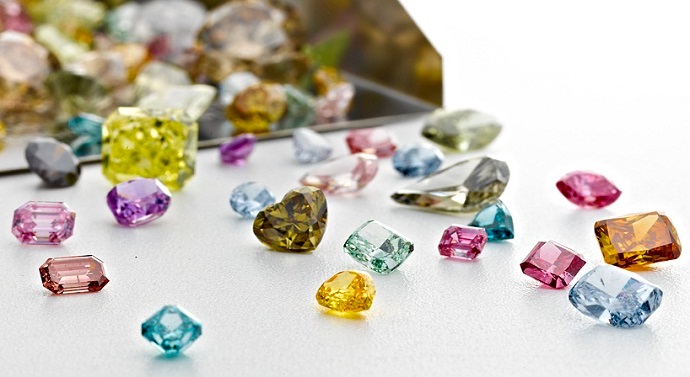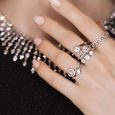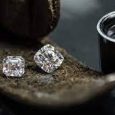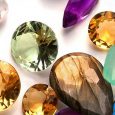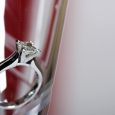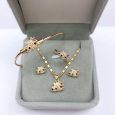Contrary to what most believe, clarity enhanced colored diamonds are REAL diamonds. They are not synthesized in a covert laboratory somewhere. Usually, these diamonds start as clear and colorless in their raw form. Then, they are subjected to a color enhancing process using HPHT (high temperature, high pressure) or irradiation.
Many prefer clarity enhanced diamonds because they are more budget-friendly than colorless diamonds. The reason behind this is that the real diamonds used in making enhanced colored diamonds have inclusions or flaws. These diamonds may not be white all over or may have a bit of color.

The History
When the 19th century rolled in, the global supply of naturally colored diamonds was not able to meet the demand. As they became scarce, they became more expensive. Only the wealthiest were able to acquire them. Because of the high demand for colored diamonds, scientists started to experiment with techniques that added color to white diamonds. This made colored diamonds available again, at a less cost to the general public.
In 1904, color enhancement is diamonds was developed. Yet, it was in the 1950s that the popularity of clarity enhanced colored diamonds boomed. This happened when diamond enhancement became safe and simple enough for commercialization. In recent years, HPHT has provided a wider range of colors for the enhanced diamonds.
Cleaning and Care
Like all diamonds, irradiated colored diamonds only change colors if they are exposed to temperatures of above 850 F or 450 C. Even so, you still have to consider the following when cleaning and caring for your clarity enhanced colored diamonds:

Cleaning
It is natural for the surface of enhanced colored diamonds to be in contact daily with grime and dirt. Once this happens, irradiated diamonds should be cleaned. The procedure is similar to cleaning white diamonds. Jewelry cleaner, ultrasonic, steam, or acid are used to clean enhanced colored diamonds. If you want to clean yours at home, just use soapy water and a soft-bristled toothbrush.
Setting
These colored diamonds can also be set in all imaginable styles such as pave, channel, flush, invisible, prong, and bezel. The only exception is wax setting. Clarity enhanced colored diamonds cannot be set in wax because the technique involves elevated temperatures.
What is It with Enhanced Colored Diamonds and High Temperatures?
When enhanced colored diamonds are being resized, they must receive the same care that an expensive gemstone gets. They should not be exposed to elevated temperatures exceeding 900°F or 450°C. Such high temperatures can alter the color of the clarity enhanced colored diamonds. To protect these stones, a seasoned jeweler will cover them with a strong mixture of denatured alcohol and boric acid. Some jewelers opt to use Heat Shield, which is a protective paste. Either method will protect the diamond from the jeweler’s torch.
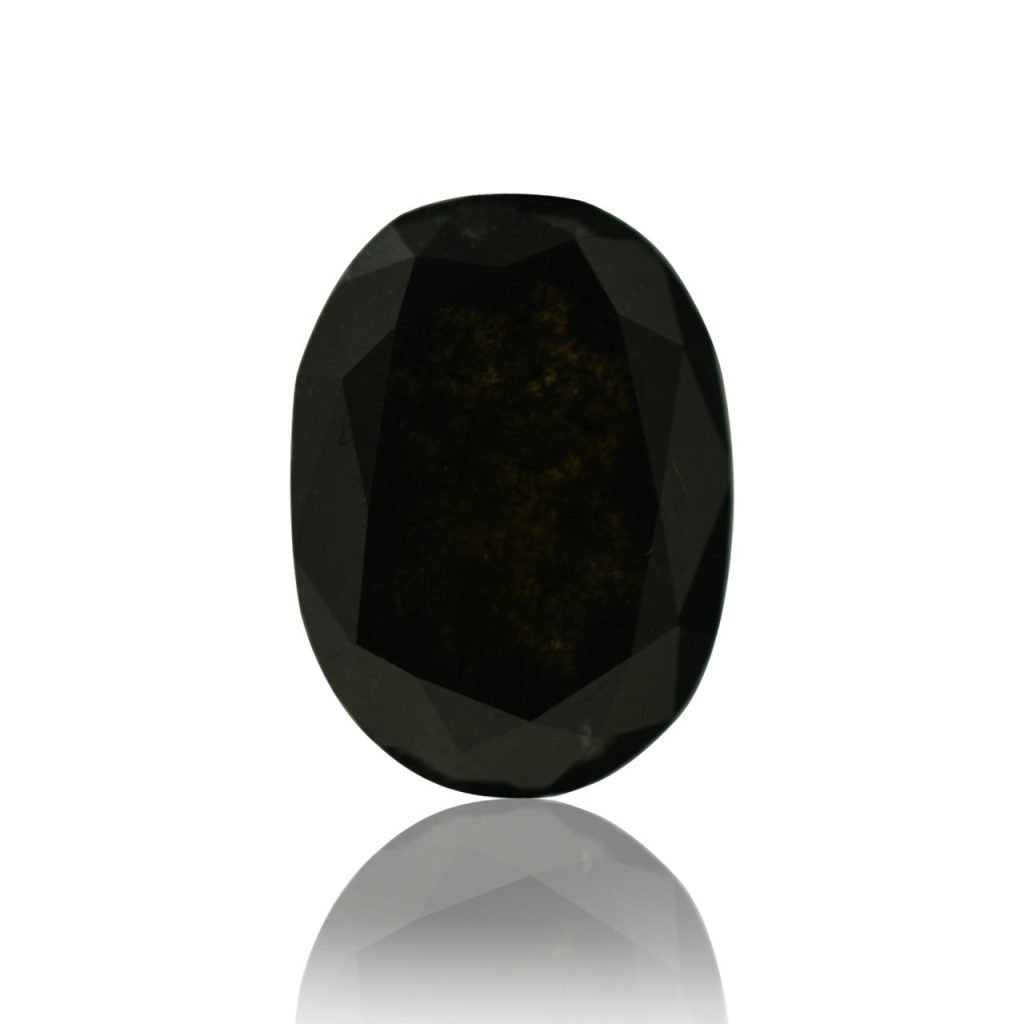
Why Do People Buy Clarity Enhanced Colored Diamonds?
That is the question, isn’t it? Why go through all that effort and process in getting an enhanced colored diamond? A natural diamond would be easier. Well, the instant answer to this is the price.
In truth, the diamond’s lack of color or natural color is one of the strongest characteristics that determine its appeal and value. Based on the GIA’s color D-Z scale, diamonds that have the tiniest amount of color are rare. These stones have higher prices compared to those that have brownish or yellowish tints. Yet, for collectors, diamonds that have intense, richer colored diamonds are very appealing. These are the diamonds that are sold and bought at auctions for unbelievable amounts.
Some people can spend up to 118,000 USD for a colored diamond just 5 millimeters small. The rest just don’t have that extra cash to get a beautiful natural colored diamond for that special someone.
The Methods
To make colored diamonds available to working-class people, natural diamonds must be subjected to various treatments:
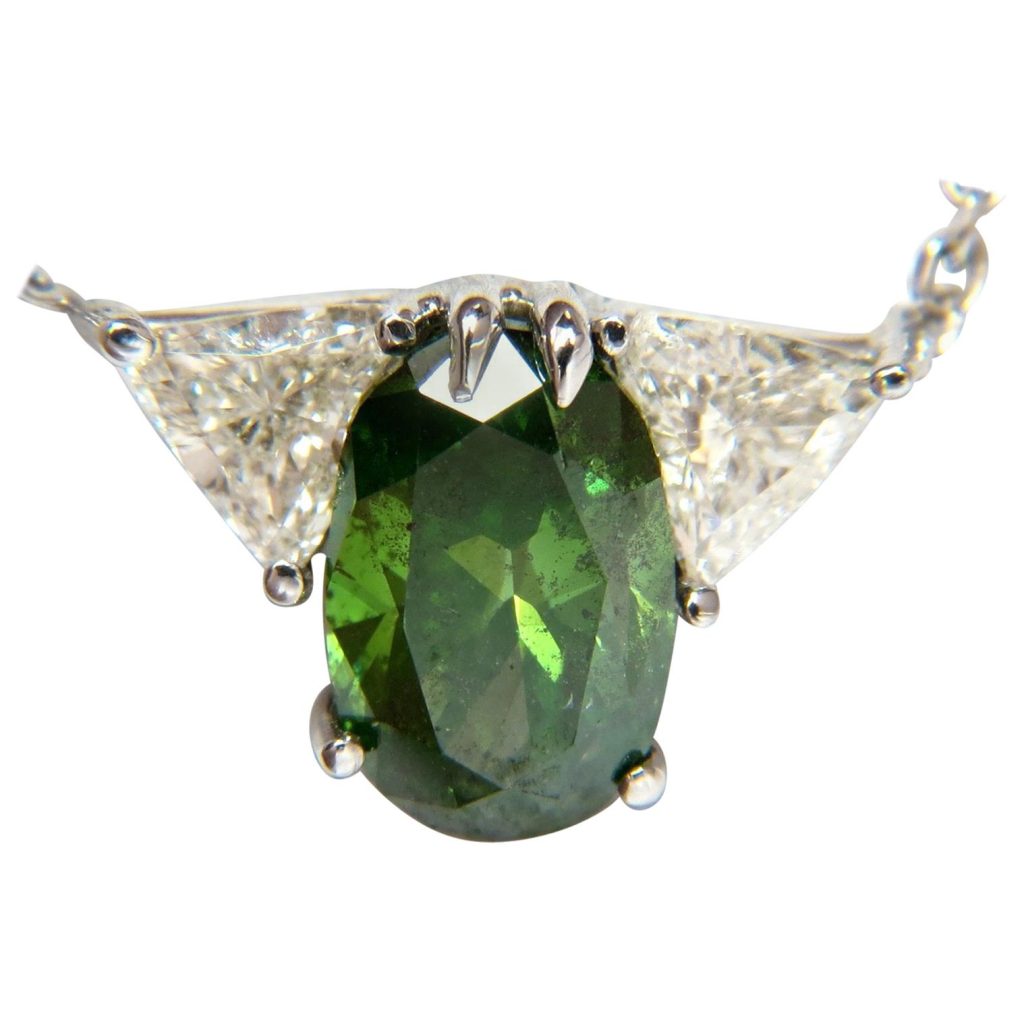
Irradiation
This treatment uses radiation energy rays from nuclear reactors and accelerators without causing damage to the diamond. Irradiation is a permanent technique, but it can be combined with HPHT. The combination can result in black, green, yellow, blue, and brown diamonds.
HPHT (Heat Pressure and High Temperature)
Known as the most popular commercial color-changing treatment for diamonds. When controlled properly, HPHT can saturate the present color or lighten the color of a low-grade diamond. This process can also turn a brownish diamond into a colorless one, making it worth more.
HPHT is a low-cost procedure in colored diamonds. The only disadvantage of this technique is that you will never know what the diamond’s final look is until the process is done. If you plan to purchase a clarity enhanced colored diamond, make sure that it has not undergone previous heat treatments. It is best to send the stone first to GIA to be graded.
Color Coating and Ink Staining
Decades ago, dyeing or ink staining is one of the most effective techniques used to change the appearance of a gemstone. With a layer of ink, anyone could stain a diamond to reduce or to improve its color. Since most of the inks used fade eventually, this is only a temporary change.
Presently, this technology has enabled diamonds to be subjected to a “sputtering process” that attached a thin film on the surface of the precious stone. The film may only be as thick as a hair strand, but it can even out a diamond’s color immediately. Note that though the technology has improved, this technique is still temporary. The thin film can still peel off or get scratched off.

Overlay Coating
In this process, an overlay coating is applied on the surface of the diamond. The said coating has silicon oxide, fluoride, titanium oxide, or aluminum oxide. The layer can also be placed on various parts of the diamond or around the entire stone. This technique is extremely challenging to detect and is completely irreversible.
Clarity enhanced colored diamonds are genuine diamonds that were just subjected to techniques that improve their appearances. If you want to purchase an amazing gift for your special someone without breaking your bank, these diamonds are the best choice for you. Just don’t forget to do your homework and ask for the necessary documents about the diamond you want to purchase.
